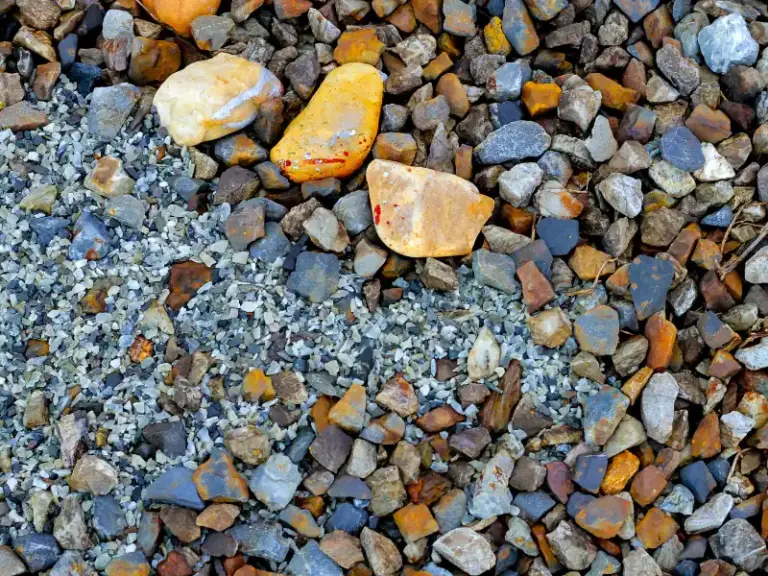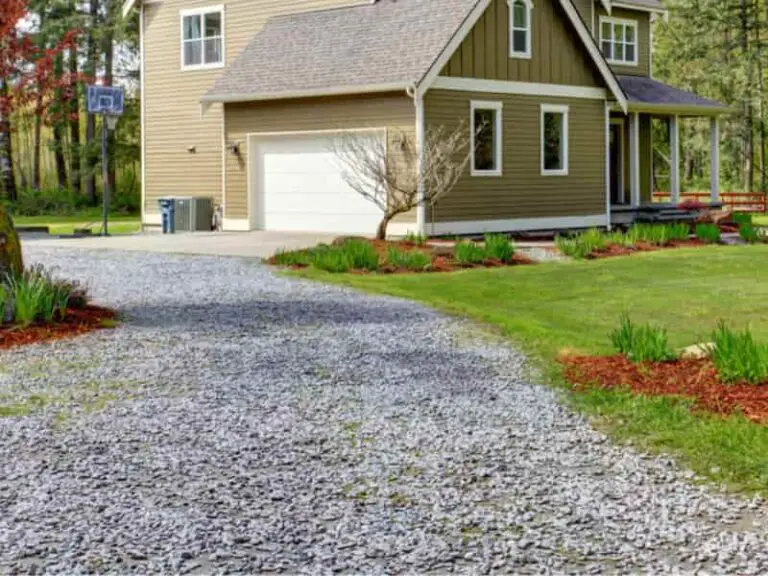How Do You Paint an Asphalt Driveway? Colors + Ideas
Asphalt is an excellent paving material option for your driveway, particularly if you want a lasting solution. It comprises complex paving chemicals and petroleum-based products, making it challenging to choose the ideal paint product for your driveway. Knowing the types of paint to use on asphalt can help you protect your investment and time.
Here are some recommendations on the best paints and a step-by-step guide on painting your asphalt driveway.
Can you paint an asphalt driveway?
An asphalt surface is mainly oil-based, removing conventional paints from the equation. The first step towards choosing the right paint starts with how big your driveway is. Choosing the wrong product may cause your driveway’s surface to peel off after one rainfall. However, you can opt for using a tinted sealer to change the color and appearance of your asphalt driveway. Due to the flexibility of asphalt composition, you won’t have to worry about the paint sticking on the surface.
What type of paint should you use on asphalt?
Painting an asphalt driveway can be easy, provided you use the right type of products and follow the right steps. If you’re like most people, you likely prefer asphalt on your driveway to tarmac because the latter can only be ripped apart once it gets destroyed. Using the wrong paint on asphalt can also make it peel afterward, particularly after exposure to specific elements. Here are the most recommended products you should try out:
100% Acrylic
Acrylic paint solves easily in water, preventing painted lines from peeling off the asphalt. While it is more expensive than other paint brands, 100% acrylic works well with a roller, brushes, and spraying equipment. If you’re a beginner at asphalt painting, it’s best to go for acrylic paint.
Coal tar
Coal tar is the second most expensive paint after acrylic, but it is more toxic to the environment. It contains complex polymers, making it more durable than other paint brands. This paint boasts the ability to withstand high traffic and harsh UV rays from the sun. If your driveway is ever busy and you don’t want a paint solution that will make you spend on maintenance costs, coal tar paint is the best option.
Oil-based paint
Oil-based paint comes in many color hues, allowing you to select a color of your choice. Unlike acrylic paint, this type of paint contains petroleum products that take more time to dry. If not applied correctly, the paint may crack, break apart, and need frequent replacement. Still, it can withstand heavy-duty and high-traffic driveways.
How to paint an asphalt driveway
Painting an asphalt driveway is an excellent way of reducing its dullness. Whether you’re painting your driveway for the first time or umpteenth time, you can rely on water-based (latex or acrylic paint) to enhance its appearance. This step-by-step guide will help you get the best results:
What you’ll need
- Tools: A paintbrush, hard-bristled brush, pressure washer, roller, stripping machine, personal protective equipment (protective eye goggles, facemask, overalls, rain boots, and gloves), and washing bucket.
- Materials: Latex or acrylic paint, tinted asphalt sealer, 60 ml of trisodium phosphate, primer, and 1.0 gallons of water
Step 1: Clean the asphalt surface with a brush and trisodium phosphate solution
Mix the 60 ml Trisodium phosphate and 1.0 gallon of water solution in a bucket of water. Pour over the asphalt and use the hard-bristled brush to scrub the surface. Pay extra attention to stained areas of the asphalt. This will help get rid of dirt, stains, and oils on your driveway. Ensure to wear your PPE when mixing the solution to prevent eye, nose, and skin irritations.
Step 2: Clean off the solution with water using a hose
The Trisodium phosphate is designed to get rid of grease, dirt, and stains in your driveway. Leaving it there might affect the paint. So, you should use a hose to wash off the solution. Using pressure water at this point might make the solution force itself on the asphalt. Instead, use a low-pressure water hose to rinse the solution by directing the unwanted materials to the nearest drain. Once the cleaning solution is thoroughly rinsed off, use the high-pressured power washer one more time to clean the asphalt effectively.
Step 3: Let the asphalt dry (16-30 hours)
The weather conditions will determine how long you should let the asphalt dry. On dry, hot, and windy days, you can let it dry for 16 hours because water evaporation happens more quickly. If the weather forecast predicts that there will be no rains in the next 24 hours, your driveway is ready for a paint job.
Step 4: Apply the primer to the asphalt
Using a roller with extension, apply the primer to a clean and dry asphalt surface for protection. Give it a couple of hours to dry on a hot day.
Step 5: Paint your asphalt driveway
The type of paint you choose for your driveway depends on the rules and regulations governing your area. Using your paintbrush or roller, apply the paint starting from the entrance to the exit to avoid stepping on the painted surface. If you have a large driveway, use a sprayer instead because they work like lawnmowers. Give it 2-3 days to dry.
Once it is dry, add a second coat to cover the first. Give it at least seven days to dry up before allowing anyone to walk or drive on the surface. If you’re painting lines in a parking lot, make sure you seal off the area using a heavy-duty sealer so that no one makes the mistake of driving over the lines before the paint dries up.
Tip for painting asphalt driveway
No matter the type of paint you choose, ensure the temperature is 50 degrees Fahrenheit and above. Pay attention to the instructions on the side of the product to determine the minimum temperatures suitable before the application. Alternatively, you can use glass beads to reflect sunlight and speed up the curing process.
Best paint for asphalt driveways
The type of paint product you choose for your asphalt driveway can either make or break it. The following recommendations will help you make a wise purchasing decision:
Acrylic paint
This type of paint has powerful water-soluble and polymer-based properties, preventing its lines from peeling off the asphalt. The water-based component allows it to protect the asphalt, subgrade, and surrounding areas. Additionally, acrylic paint is available in many color hues and works well with conventional paintbrushes, rollers, and spraying equipment, making it perfect for versatile types of applications. The only pitfall acrylic paints have costlier than ordinary paints, but they’re quality-assuring.
Oil-based paints
Like acrylic paints, oil-based paints come with versatile color hues. That gives you an edge as far as color options are concerned. You need to exercise a great deal of patience when applying it, as it can take up to 14 days to dry up, particularly if your driveway is heavily trafficked. The only pitfall is that oil paint on asphalt may crack or break apart. That means you’ll need to replace it every 1-2 years.
Water-based latex paint
Like acrylic and oil-based paints for asphalt, water-based latex paint also comes in many colors. These paints are designed for asphalt because they’re already sealed with other paint models like coal tar paint. This makes it perfect for DIY painters who’re in a hurry because it dries up within three hours after application.
Weather conditions, product quality, the right materials, and tools can help you determine if your driveway asphalt painting project will be a success or failure. If there are cracks, ensure you repair and seal them down before painting. When you pay attention to these tips, you’ll end up with long-lasting abrasion protection and protection from cracks or wear and tear.


